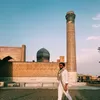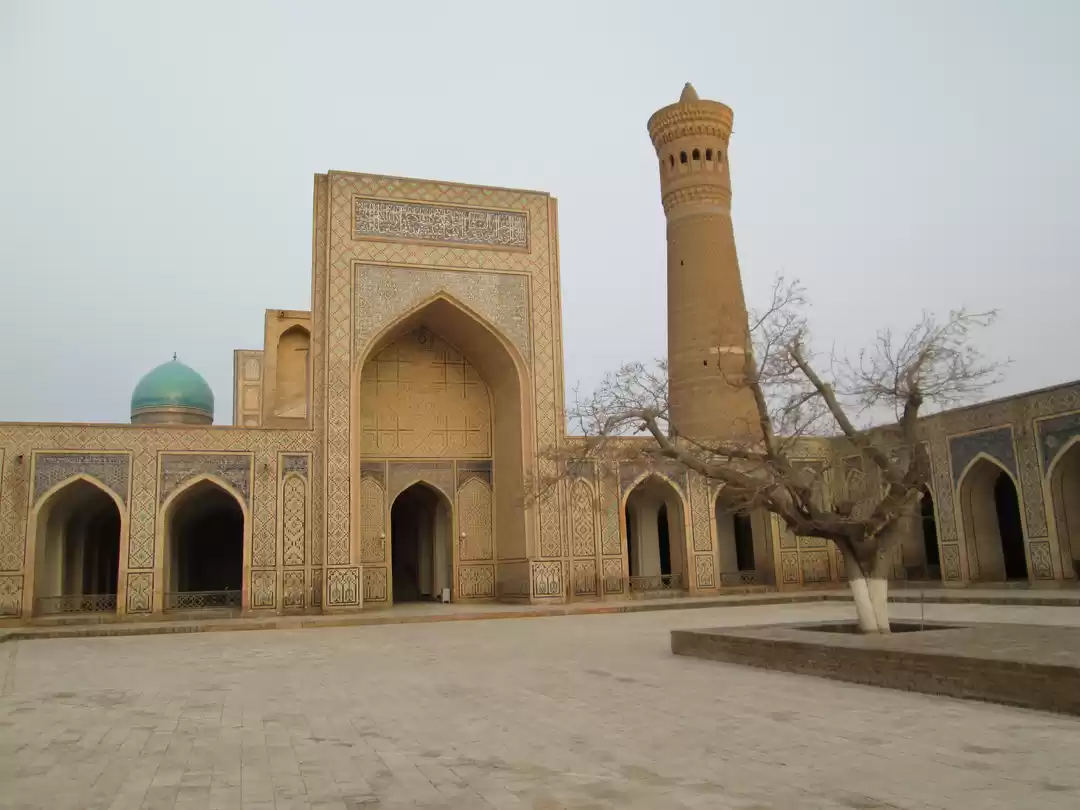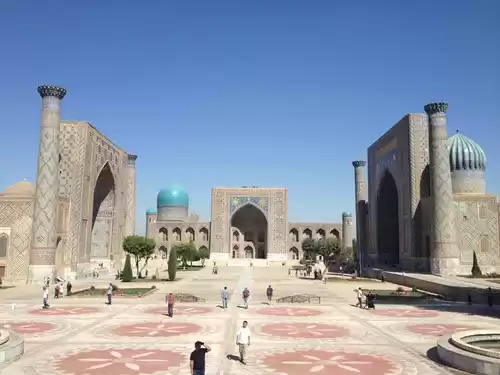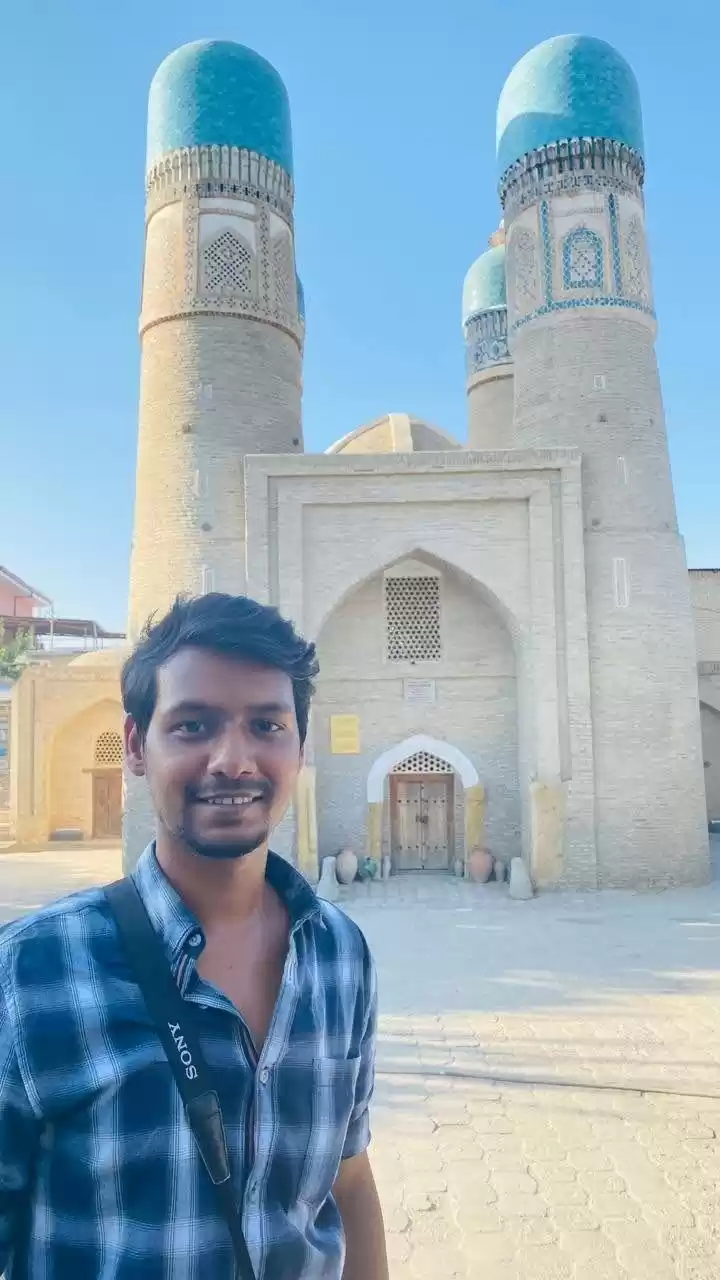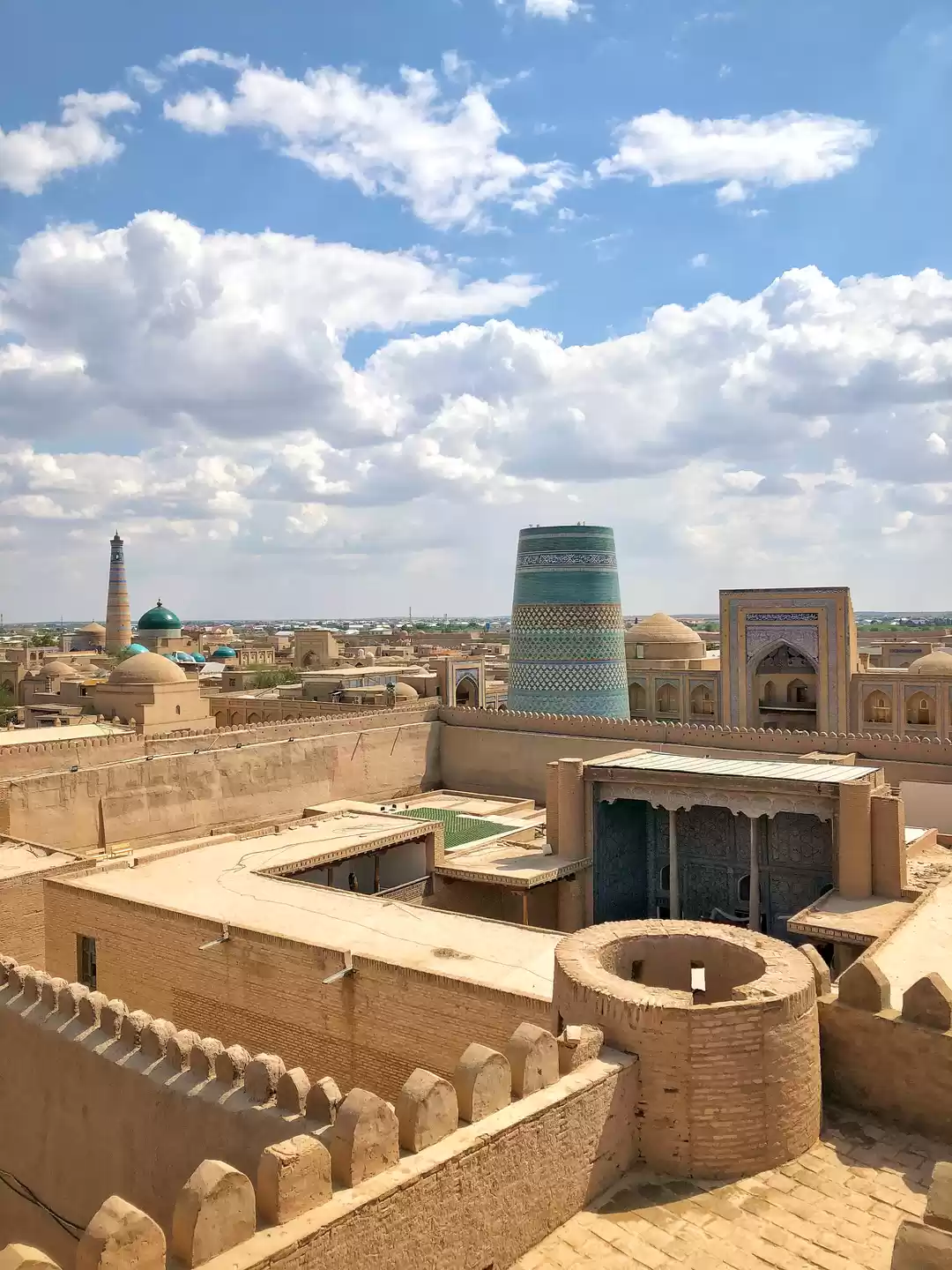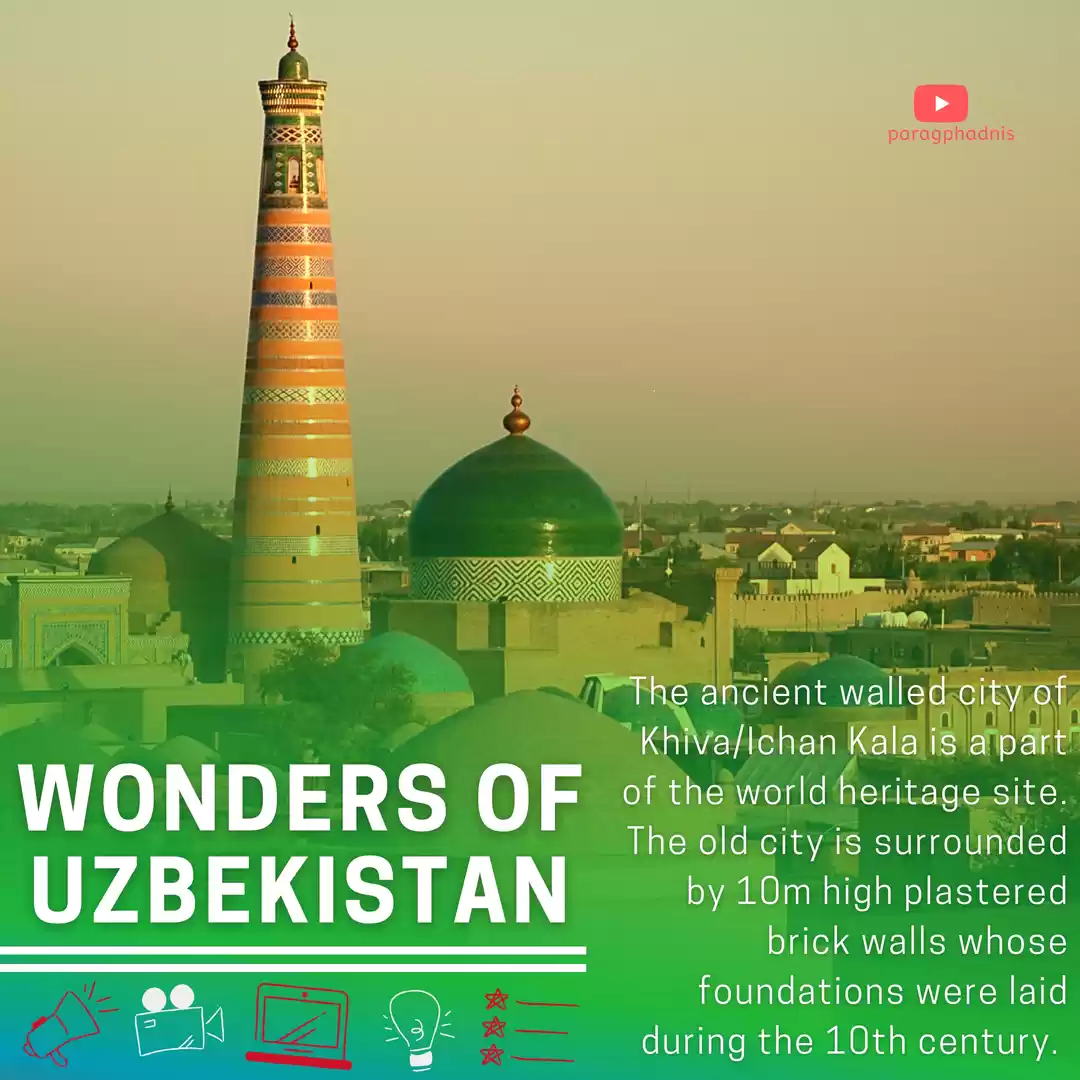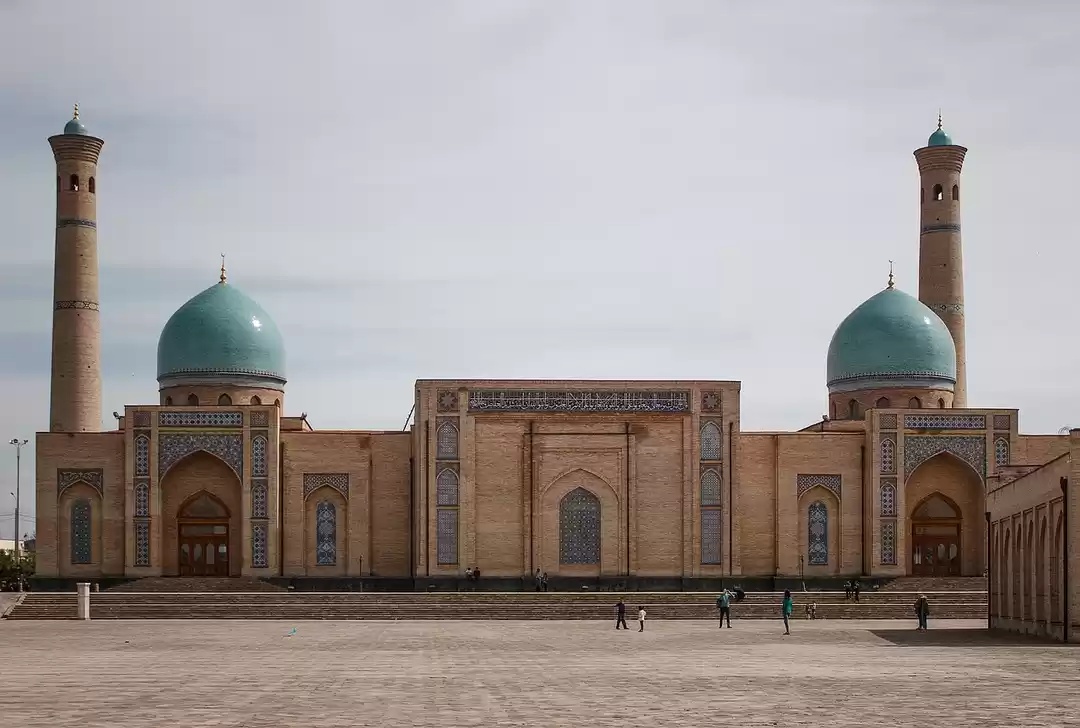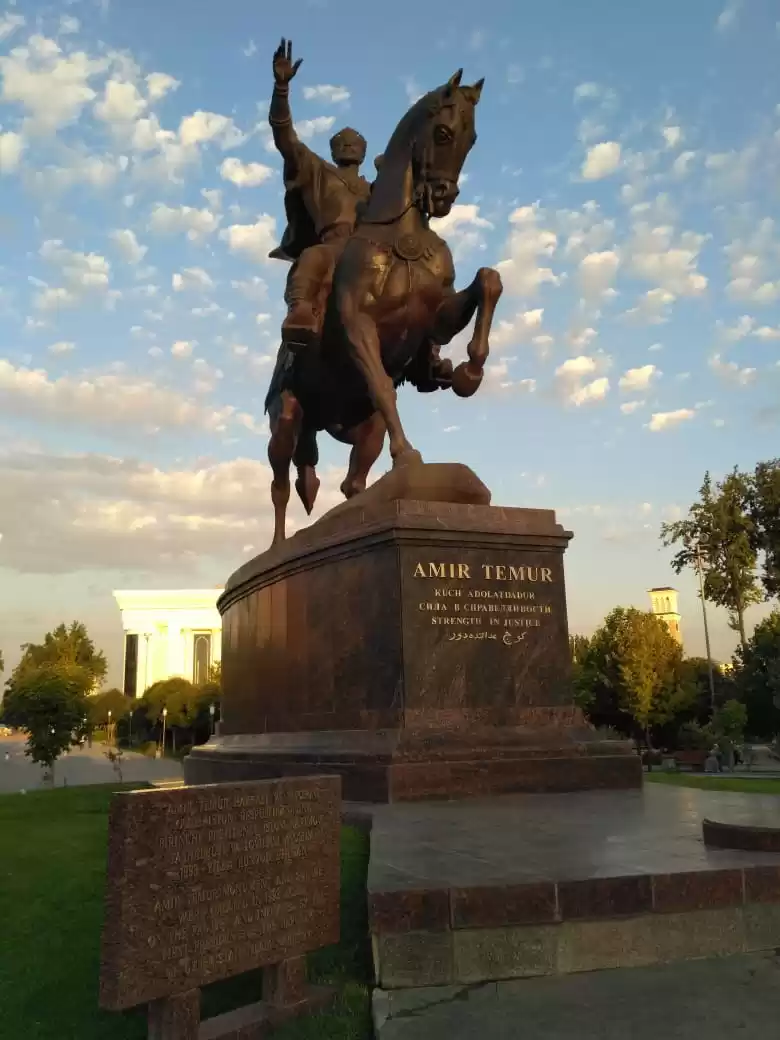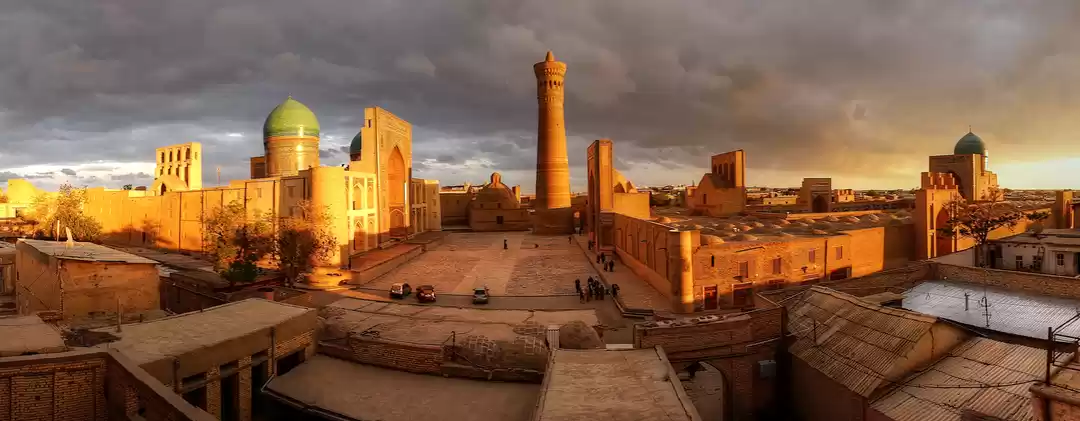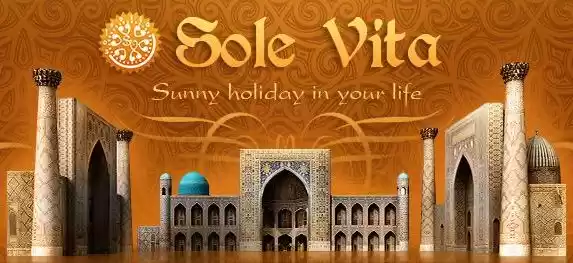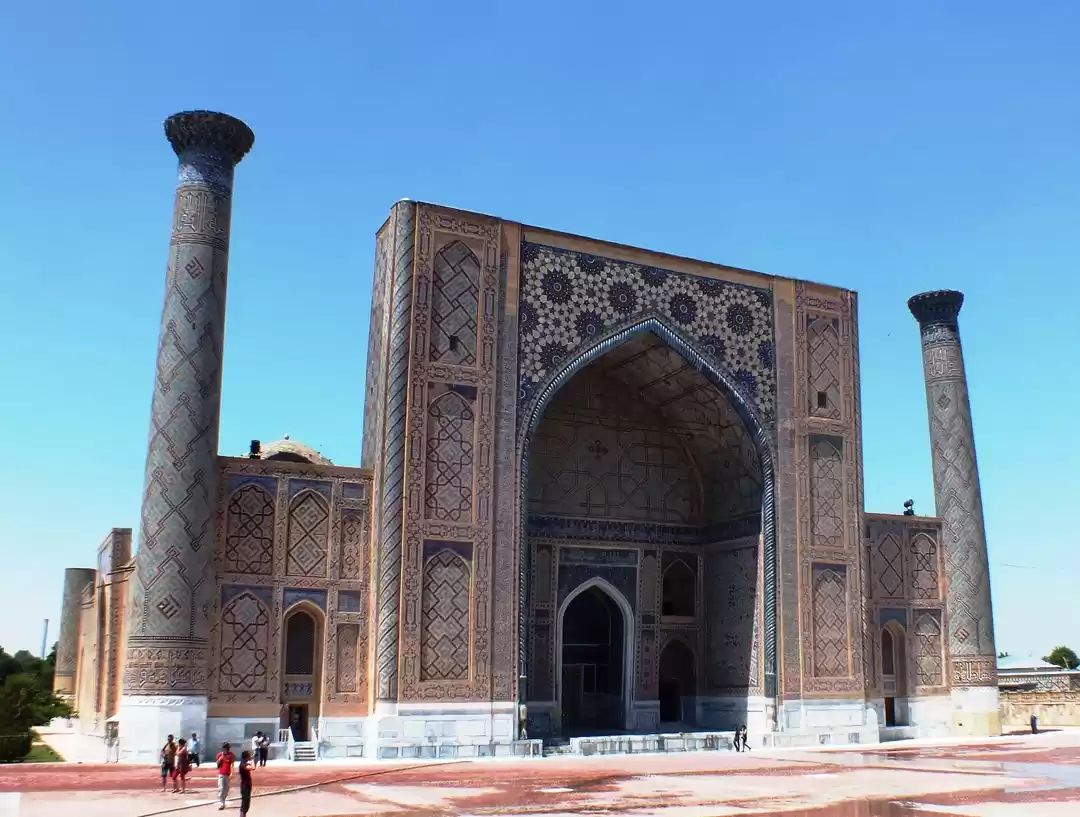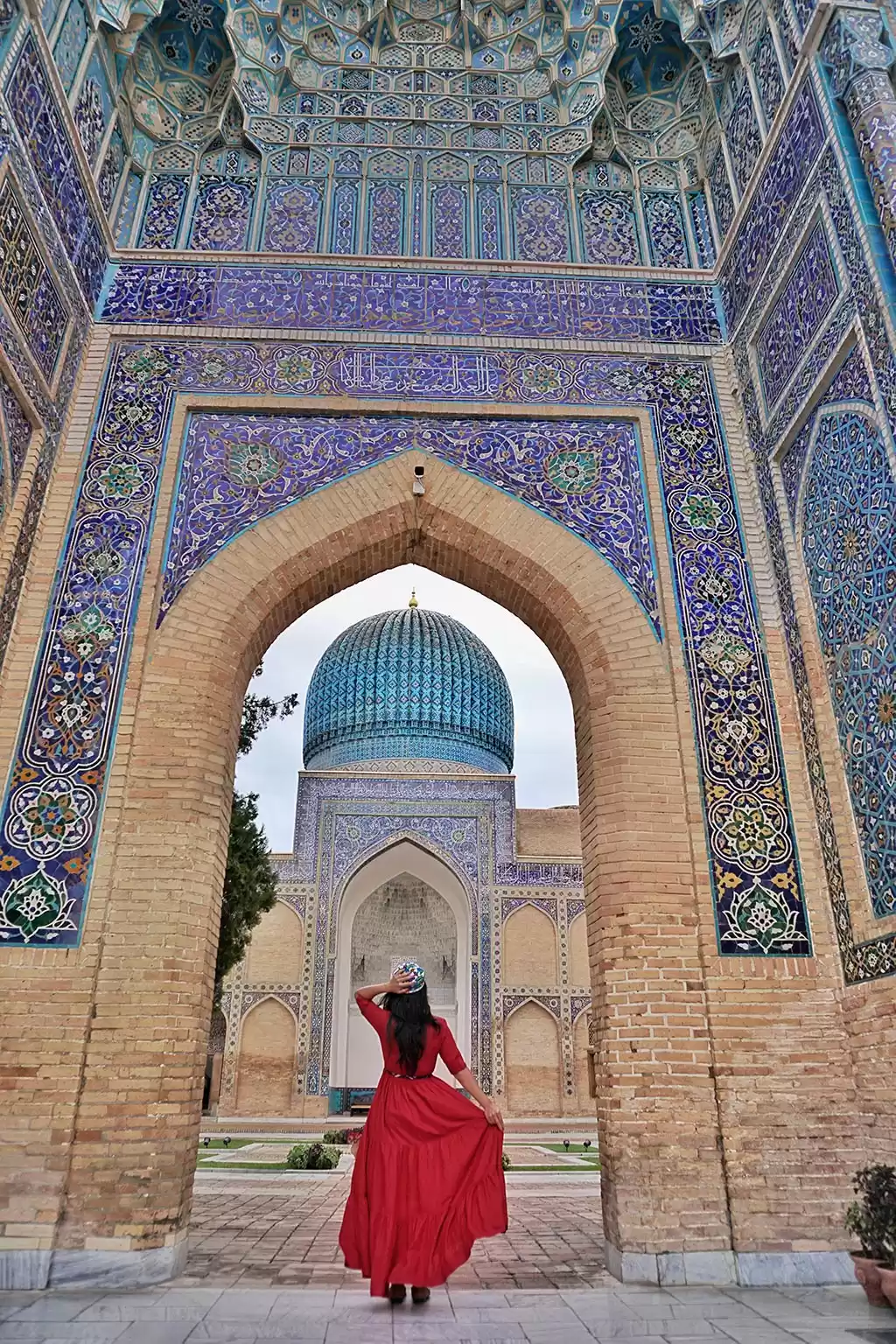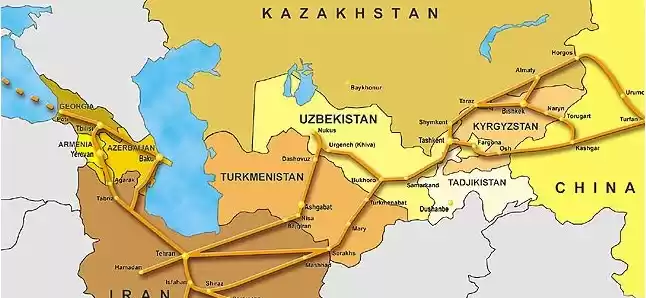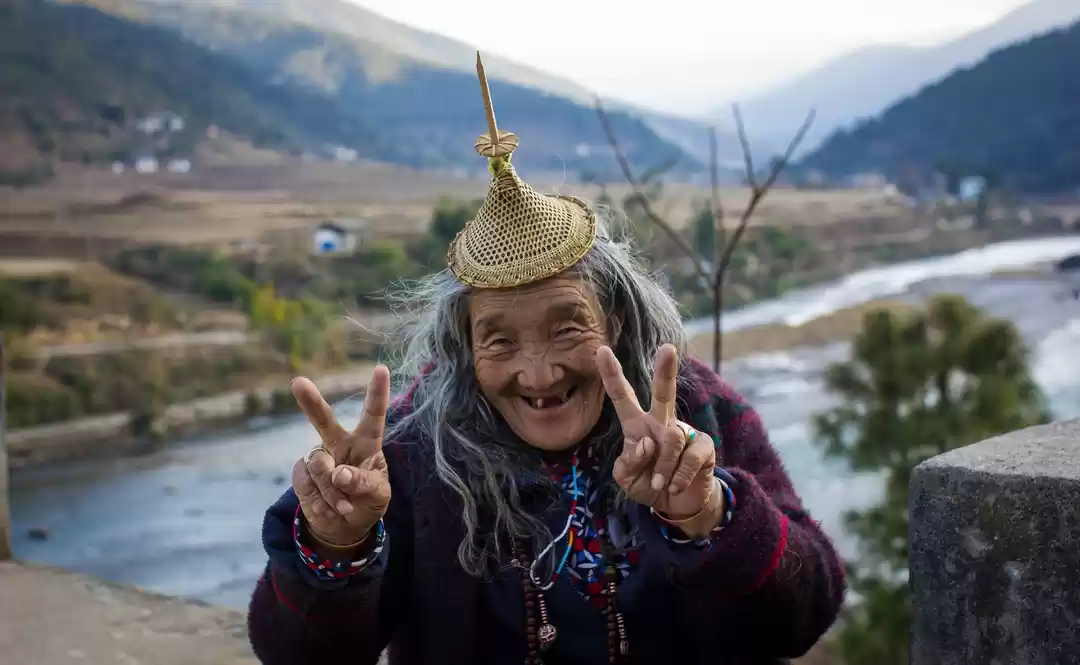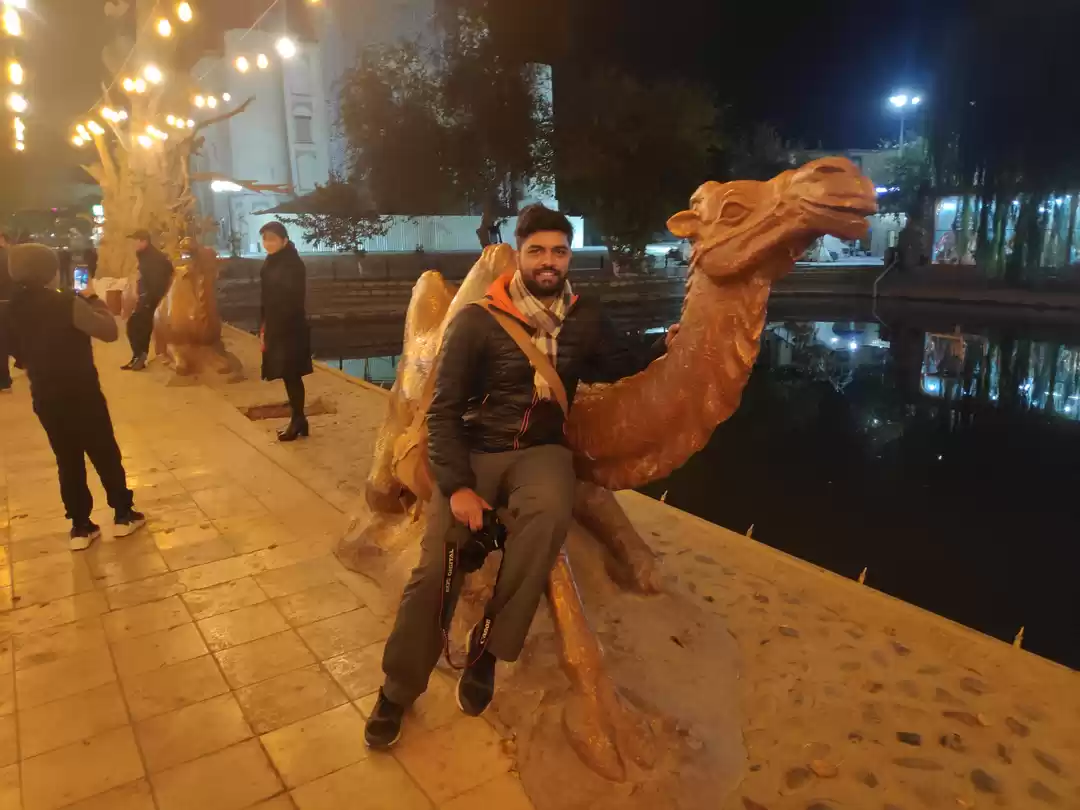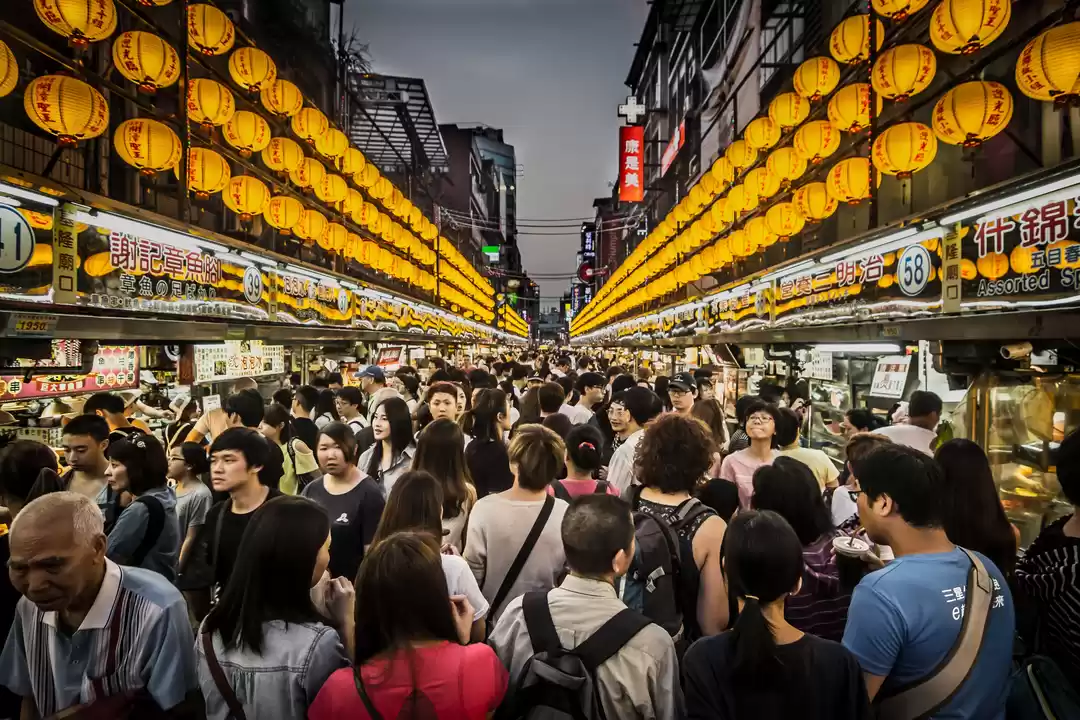" The Silk Route is a dream that grows slowly and sweeps you off its charm and mystery, until you decide to unravel it, know where the roads lead to beyond tales & horizons."
As the new vertical of the brand 'Vajor Experiences' was coming into full bloom creating befitting experiences for conscious and mindful souls , our first international travel escape occurred in the month of September'19, 'A time travel journey to explore the Silk route: Uzbekistan' as our curator cum host likes to describe it. Uzbekistan was a reflection of our values, aesthetics and a strong rooted culture connect like a melting pot. The team's very own antiquarian, with a persona that is a mix of Rick O'Connell and Indiana Jones, Shah Umair works as an 'Experience Curator' for the brand. An avid numismatist, his primary interest lies in travelling and exploring untapped heritage and culturally rich abodes. And Uzbekistan being an abundant source of everything that holds history together finely decorated with entrancing architecture and traces of rich culture, below you will find an intricately woven travelogue in the words of Umair himself.
"It's almost ironic that Tashkent is the gateway to Uzbekistan and also to the Silk route, a country full of wonder, intrigue, friendly people, blue tile, gigantic architecture and the remnant of the silk road.
A modern city boasting a population of just over two million people, I was impressed by how well things seemed to work here. Its relatively modern infrastructure can be partially attributed to the 1966 earthquake, which left over 300,000 of the city's residents homeless. Sadly, the disaster also left little architectural heritage to mark the city's significance as an important trading stop along the ancient Silk Road.
We started our escape exploring Tashkent old town at the Hast Imam Complex, where the most sought-after piece here is the world's oldest copy of the Koran, brought back to Uzbekistan by Tamerlane upon his defeat of ancient Iraq. This important relic is a stark reminder of the prominent position Central Asia once had in history. Not only this, but the views that surfaced around Khast Imam were truly impressive, when compared to the stunning scenery of Samarkand and Bukhara.
Post a day in Tashkent we took the super-fast Afrosiyob train to Bukhara, a poetic and wistful old Silk Road city with all the ancient architecture and vibe that talks of a 14th century township contained within the 21st century. Multiple unnamed alleyways run around like little veins, with Chai Khanas (tea houses) and local rooftop restaurants by the dozen.
Some of the few main highlights of Bukhara are Po-i-Kalyan that houses the towering Kalyan Minaret, the Kalyan mosque and a couple of Madrassahs. Its sandstone coloured hues are best experienced at sunrise when the old-world vibes are so heady and potent, that we instantly get transported to a time when Genghis Khan ordered his troops to spare the Kalyan minaret as they went about destroying everything else. Such is the quiet power of the minaret.
Walk beyond the Kalyan Square and you'll reach the Ark Fortress. A majestic walled fortress housed Bukhara's emirs in the past, and a small part of it is now open to the public. It's an impressive medieval sight to behold.
As you walk past the Lyab-i-Hauz square, the main square of Old Town Bukhara, we spotted people living quite the simple lives of the past centuries with old men playing a game of Dominoes, women catching up over chai and children playing by the little pond.
Apart from the 'Traders Dome' are the old markets of Bukhara that are functional from the past 2000 years, Caravan Sarai's are another sight to unique aspect of Bukhara. Earlier used as motels for traders and travellers, they have now been converted into restaurants or artist retreats, Shah-i-Zinda.
Post the bukhara exploration, we moved to Samarkand. Previously captured by both Alexander the Great and Genghis Khan, this erstwhile capital of the Timurid Empire is considered to be the jewel Silk Road city of Uzbekistan. The UNESCO World Heritage site has an impossibly stunning list of well-preserved and restored sites with an abundance of history radiating from every tomb and mausoleum. The dazzling display of mosaics and domes will make you feel like you've been dropped through a door right into an Arabian Nights fantasy.
Some of the places that are worth seeing here are Registan Square: No words will ever be able to bring alive the vibe of Registan Square in your imagination. No picture will prepare you for the electric experience of seeing it at dawn before the crowds roll in. And no narrative will ever virtually bring alive the magic of the lit-up square at night.
Inside the Gur-e-Amir mausoleum rests Central Asia's most formidable conqueror- Amir Timur or Timurlane as he's known in the West. The ceiling and the details inside his tomb dazzle and exude energy and sense of power, almost as if a part of him is still alive in there!
I will never get over the fine craftsmanship of this . It is a long avenue of tombs dedicated to the female members of Timur's family. It contains some of the richest tilework in the world. The name, which means 'Tomb of the Living King', refers to its original, innermost and holiest shrine - a complex of cool, quiet rooms around what is probably the grave of Qusam ibn-Abbas, who is said to have brought Islam to this area in the 7th century. The most stunning Timurid-era tilework dates from the 14th and 15th centuries.
Carpet Factory is an "all women" run place housing one of the finest carpets in the world. From dying the yarn to weaving it, a single piece of carpet takes almost a year to be completed and then becomes a one of a kind masterpiece.
Post exploring the cities of the Silk route and heading back to take our flights, we ended the Vajor Experience with a small shopping trail at Chorsu market. Tashkent's most famous farmers market, topped by a giant green dome, is a delightful slice of city life spilling into the streets off the Old Town's southern edge. There are acres of spices arranged in brightly coloured mountains, car sized sacks of grain, entire warehouses dedicated to sweets, with the freshest bread and fruits available. The escape ended with the tribe happier and content from when they first landed in Uzbek, with promises to come back and live in the present amidst the 14th Century atmosphere."
"From the opulent Shah-i Zinda in Samarkand to twisting lanes of Bukhara , the artists/ craftsmen who still upkeep the cultural abode to capturing postcard landscapes in local bullet trains or be it savouring authentic culinary delights , this path traced by one of worlds' greatest storyteller Ibn Battuta , was now breathed with Vajor Experiences as the tribe on the escape wrote their own "Rihla".

